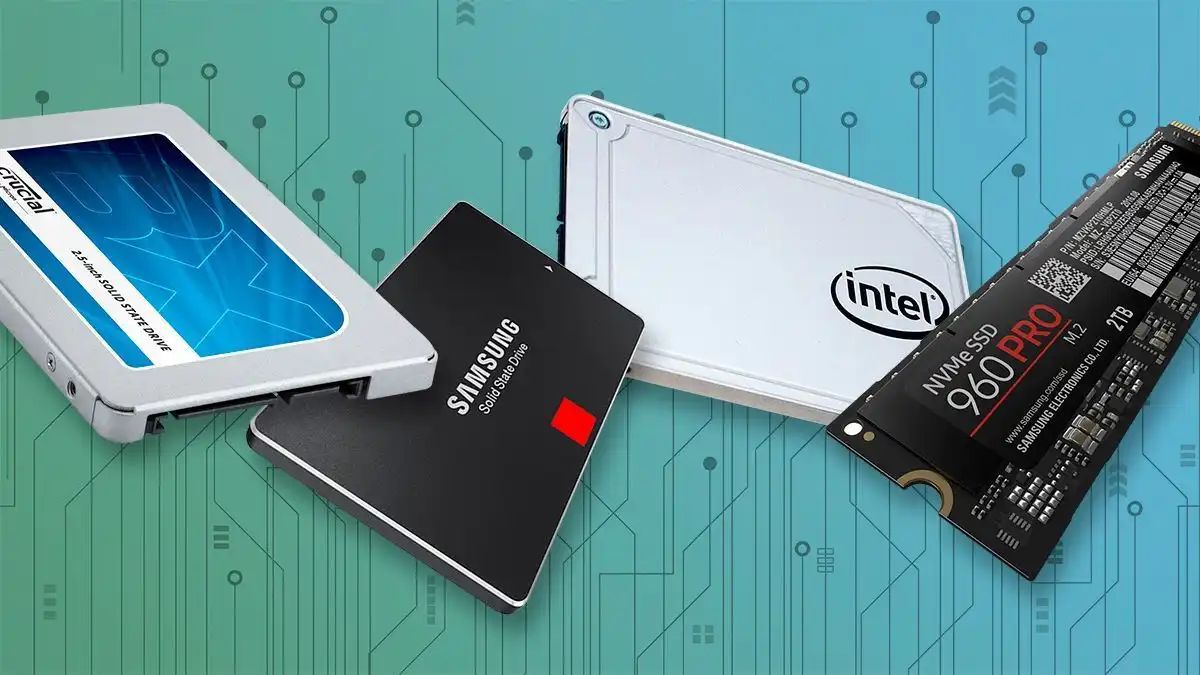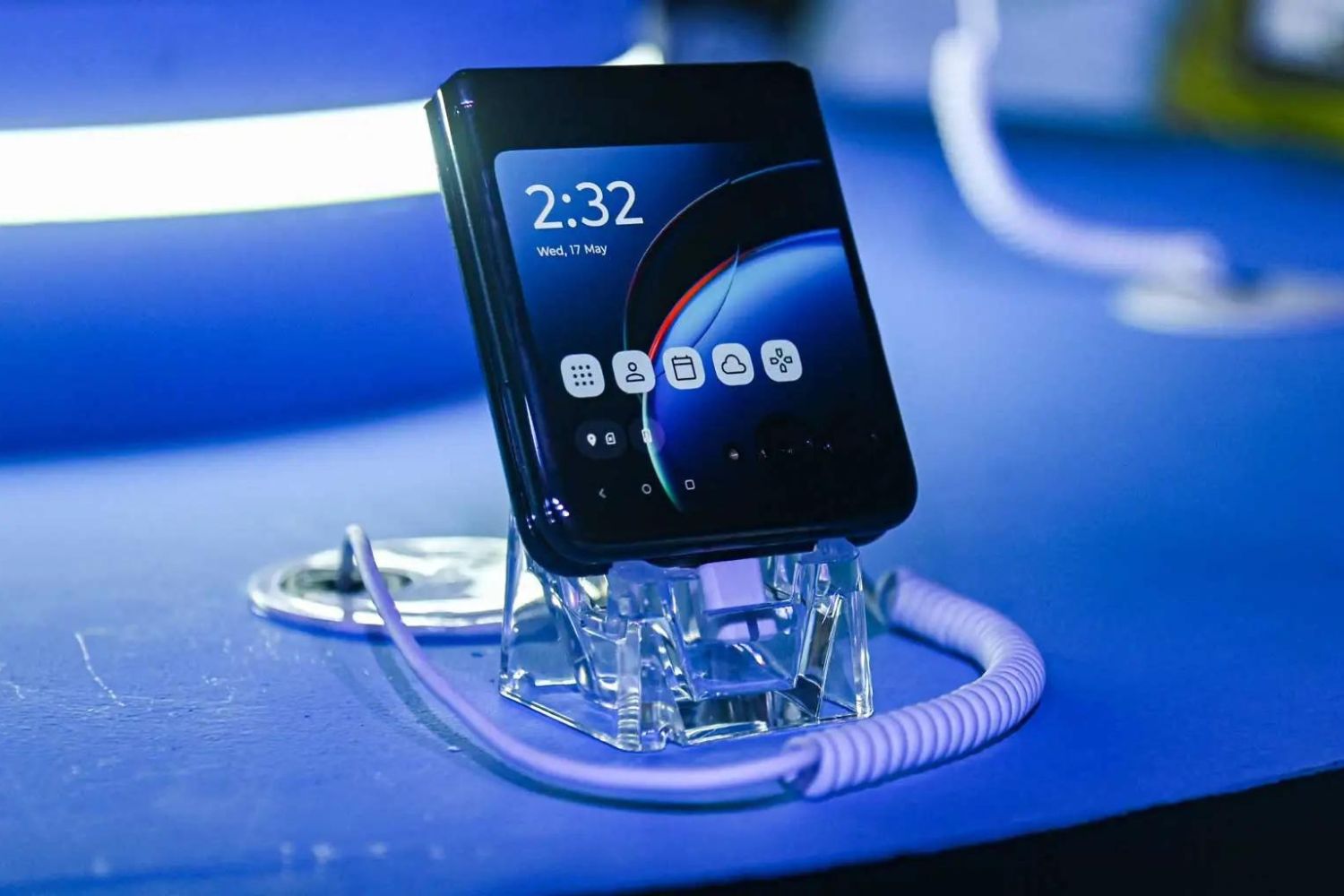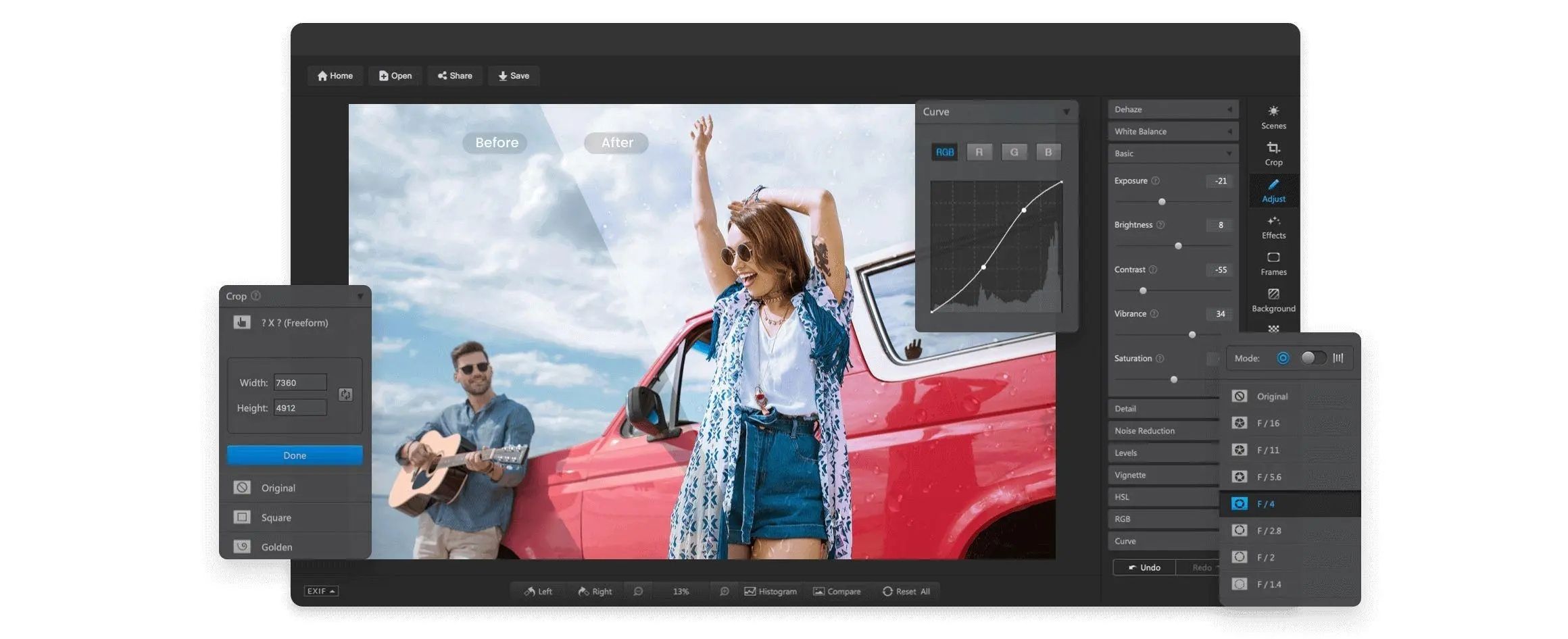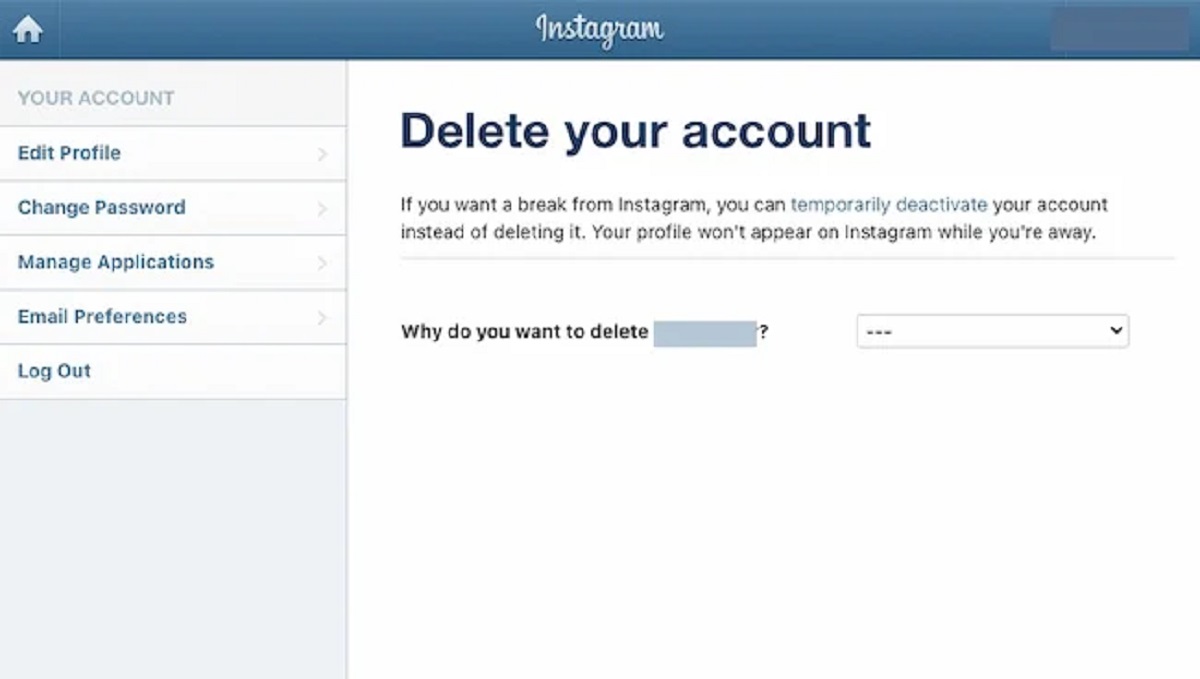Introduction
Our memories and experiences are often captured in the form of photographs taken with digital cameras. These precious moments can be lost forever if our pictures are accidentally deleted or somehow become inaccessible. Fortunately, there are ways to restore deleted pictures from a digital camera, ensuring that our memories are preserved.
With the increasing popularity of digital cameras, it has become more important than ever to understand the importance of backing up our photos. While it is always recommended to regularly backup your pictures to a computer or cloud storage, accidents can still happen. In such cases, knowing how to restore deleted pictures can be a lifesaver.
One of the first steps you should take when trying to recover deleted pictures is to check the camera’s trash bin or recycle bin. Similar to how files are stored in the recycle bin on a computer, digital cameras often store recently deleted photos in a separate folder that can be accessed and restored. If the pictures are not found in the camera’s trash bin, there are still other options available.
Another method to recover deleted pictures is by using memory card recovery software. This software is designed to scan the memory card and recover any deleted files, including pictures. It is important to note that the sooner you attempt to recover the deleted files, the higher the chances of successful recovery.
In this article, we will provide a step-by-step guide for restoring deleted pictures from a digital camera. We will also share some tips and best practices to increase the chances of successful picture recovery. Whether you accidentally deleted your photos or the memory card became corrupted, we’ve got you covered.
So, if you’re ready to rescue your deleted pictures and relive those special moments, let’s dive into the world of digital camera picture restoration!
Understanding the Importance of Backup
Accidents can happen at any time, and the loss of precious memories captured in digital photographs can be devastating. That’s why it is crucial to understand the importance of backing up your pictures on a regular basis.
Backing up your photos ensures that even if your digital camera malfunctions, suffers a software glitch, or the memory card becomes corrupted, you still have a copy of all your precious pictures. It is a preventive measure that safeguards your memories against unexpected events.
There are several ways to back up your pictures, providing an extra layer of protection. One of the most common methods is transferring your photos to a computer. This involves connecting your camera to a computer using a USB cable or removing the memory card and using a card reader. Once connected, you can easily copy and paste your photos onto your computer’s hard drive or an external storage device.
Cloud storage is another valuable option for backing up your pictures. Services like Google Drive, Dropbox, and iCloud allow you to upload your photos to their secure servers. This way, even if something happens to your camera or computer, your memories will be safely stored in the cloud, accessible from any device with an internet connection.
Another method is to make use of external hard drives or portable storage devices. These devices provide additional physical storage space, allowing you to transfer and store your photos safely. They are convenient, portable, and offer a reliable backup solution.
It is important to note that backing up your pictures should be a regular habit rather than a one-time task. Make it a routine to transfer and store your photos after each photoshoot or at regular intervals. This way, you minimize the risk of losing all your pictures if something goes wrong with your camera or memory card.
By understanding the importance of backing up your pictures, you can ensure that your memories are protected and accessible no matter what happens. Take the time to implement a backup system that works for you and give yourself peace of mind knowing that your digital treasures are safe.
Checking the Camera’s Trash Bin
When you accidentally delete pictures from your digital camera, the first place you should check is the camera’s trash bin or recycle bin. Just like the recycle bin on a computer, digital cameras often have a similar feature that temporarily stores recently deleted files.
The trash bin on your camera serves as a safety net, allowing you to recover deleted pictures before they are permanently removed from the memory card. It acts as a holding area where deleted files reside until they are manually cleared or when the memory card is formatted.
Accessing the trash bin will vary depending on the make and model of your digital camera. However, the process is usually straightforward. Start by navigating to the menu or settings on your camera and look for an option related to “trash” or “recycle bin”. Once you find the appropriate menu, you can open it and browse through the deleted files.
Keep in mind that the trash bin on your camera may have a limited capacity, and once it reaches its limit, it will automatically delete the oldest files to make room for new ones. Therefore, it is essential to act quickly and check the trash bin as soon as you realize your pictures have been mistakenly deleted.
If you find the deleted pictures in the trash bin, you can usually choose the option to restore or undelete them. Once restored, the pictures will be moved back to their original location on the memory card, and you can access them as you normally would.
However, it is important to note that if you have already emptied the trash bin or formatted the memory card after deleting the pictures, recovering them becomes more challenging. In such cases, you will need to rely on specialized software or professional data recovery services.
Checking the camera’s trash bin should always be your first step when attempting to recover deleted pictures. It provides a quick and simple way to possibly restore your images without the need for additional software or services. Remember to act promptly and check the trash bin as soon as possible for the best chances of successful picture recovery.
Using Memory Card Recovery Software
If you have exhausted the options of checking the camera’s trash bin and still cannot find your deleted pictures, using memory card recovery software can be a viable solution. This software is specifically designed to scan your memory card and recover deleted files, including photos.
Memory card recovery software works by analyzing the memory card’s file structure and identifying any traces of deleted files that may still exist. It can recover pictures that have been accidentally deleted, lost due to memory card corruption, or even after the card has been formatted.
There are numerous memory card recovery software options available, both free and paid, each with its own features and capabilities. Some popular choices include Recuva, EaseUS Data Recovery Wizard, and CardRecovery. Before downloading and installing any software, make sure to do your research and choose a reputable and reliable program.
To use memory card recovery software, start by inserting your memory card into a card reader or connecting your camera directly to your computer. Launch the recovery software and select the appropriate drive where your memory card is recognized. The software will then scan the memory card for any recoverable files.
Once the scan is complete, you will be presented with a list of recoverable files, including your deleted pictures. Review the results carefully and select the pictures you wish to restore. Choose a destination folder on your computer where the recovered files will be saved. It is important to avoid saving the files back onto the same memory card to prevent overwriting any recoverable data.
Keep in mind that the success of picture recovery using memory card recovery software depends on several factors, including the condition of the memory card, how long ago the pictures were deleted, and whether any new data has been written to the card since the deletion. It is recommended to attempt recovery as soon as possible for the best chances of successful retrieval.
Using memory card recovery software can be an effective way to recover deleted pictures from your digital camera. However, it is essential to remember that prevention is always better than cure. Regularly backing up your photos and being cautious when deleting pictures can help avoid the need for recovery software altogether.
Step-by-Step Guide for Restoring Deleted Pictures
Restoring deleted pictures from your digital camera can be a straightforward process if you follow the right steps. Here is a step-by-step guide to help you through the picture restoration process:
- Stop Using the Camera: As soon as you realize that your pictures have been deleted, stop using the camera to avoid overwriting any recoverable data. Continued use of the camera can increase the chances of the deleted pictures being permanently lost.
- Remove the Memory Card: Carefully remove the memory card from the camera. This will enable you to access it on a computer or use memory card recovery software for retrieval.
- Choose the Right Method: Decide whether you want to attempt picture recovery using the camera’s built-in features, such as the trash bin, or if you need to rely on memory card recovery software.
- Check the Camera’s Trash Bin: If your camera has a trash bin or recycle bin feature, navigate to the appropriate menu and check if the deleted pictures are still stored there. If they are, follow the instructions provided to restore the pictures back to their original location.
- Use Memory Card Recovery Software: If the pictures are not found in the camera’s trash bin, connect the memory card to a computer via a card reader or directly connect the camera using a USB cable. Use reliable and reputable memory card recovery software to scan the card and recover the deleted pictures. Follow the software’s instructions to select and restore the pictures to a designated folder on your computer.
- Review the Recovered Pictures: Once the recovery process is complete, review the recovered pictures to ensure they are intact and in good condition. Verify that all the desired pictures have been successfully restored.
- Backup the Recovered Pictures: To avoid future data loss, it is crucial to back up the recovered pictures onto a separate storage device or cloud storage. This provides an additional layer of protection for your precious memories.
- Format the Memory Card (Optional): If you have successfully recovered your pictures and backed them up, you can choose to format the memory card within the camera or using a computer. Formatting the card removes any residual data and prepares it for future use.
By following these step-by-step instructions, you can effectively restore deleted pictures from your digital camera. Remember to act quickly, avoid further use of the camera or memory card, and make regular backups to minimize the risk of data loss in the future.
Tips to Increase the Chances of Successful Recovery
When it comes to recovering deleted pictures from a digital camera, there are some tips and best practices that can greatly increase your chances of successful recovery. By following these tips, you can maximize the likelihood of retrieving your precious memories:
- Act Quickly: As soon as you realize that your pictures have been deleted, it is essential to act quickly. Avoid using the camera or writing new data to the memory card, as this can overwrite the deleted files and make the recovery process more challenging.
- Stop Continuous Shooting: If you are in the midst of continuous shooting when the pictures are deleted, immediately stop the continuous shooting mode. This can help prevent the camera from overwriting the deleted files with new ones.
- Remove the Memory Card: Remove the memory card from the camera to prevent any accidental deletion or formatting. Handle the card carefully to avoid physical damage that could render the data irretrievable.
- Backup Regularly: Prevention is always better than cure. Make it a habit to regularly back up your pictures to a computer or cloud storage. This way, even if the pictures are accidentally deleted, you will have a secondary copy available.
- Avoid Formatting the Memory Card: Refrain from formatting the memory card after deleting the pictures. Formatting erases all data on the card, making it more difficult to recover the deleted pictures. Only format the card if you have successfully retrieved the pictures and backed them up.
- Use Reliable Recovery Software: When using memory card recovery software, choose a reputable and reliable program. Read reviews and do research to ensure the software is trustworthy and has a high success rate in recovering deleted files.
- Select the Right File Types: When using recovery software, specify the file types you want to recover. This narrows down the scan and increases the speed and efficiency of the recovery process.
- Avoid Saving Recovered Files to the Same Card: After successfully recovering your deleted pictures, avoid saving the files back onto the same memory card. This prevents overwriting any remaining recoverable data and ensures the safety of your restored pictures.
- Consider Professional Help: If all else fails and you are unable to recover the deleted pictures on your own, consider seeking the help of professional data recovery services. These experts have specialized tools and techniques to recover data from damaged or corrupted memory cards.
By following these tips, you can significantly increase the chances of successful picture recovery from your digital camera. Remember that time is crucial, so act quickly and use reliable methods to retrieve your precious memories.
Frequently Asked Questions (FAQs)
Here are some frequently asked questions about restoring deleted pictures from a digital camera:
- Can I recover deleted pictures from a formatted memory card?
- What should I do if I accidentally formatted my memory card?
- Is it possible to recover deleted pictures if the camera’s memory card is physically damaged?
- Are there any free memory card recovery software options available?
- Can I recover deleted pictures from a camera’s internal memory?
- What should I do if the memory card is not recognized by the computer?
Yes, it is possible to recover deleted pictures from a formatted memory card. However, the chances of successful recovery may decrease, as formatting erases all data on the card. Use reliable memory card recovery software as soon as possible to maximize the chances of retrieval.
If you accidentally formatted your memory card, stop using it immediately to prevent further data overwrite. Use memory card recovery software to scan and recover the deleted pictures. Remember not to save the recovered files back to the same memory card.
In some cases, it may be possible to recover deleted pictures even if the memory card is physically damaged. However, it is best to consult with professional data recovery services who have specialized tools and expertise to handle physically damaged memory cards.
Yes, there are free memory card recovery software options available, such as Recuva and PhotoRec. These programs offer basic recovery capabilities but may have limitations compared to paid software. It is essential to research and choose a reliable program that suits your needs.
The ability to recover deleted pictures from a camera’s internal memory depends on the specific camera model. Some cameras may have a built-in recycle bin or undelete option, while others may not. If the camera allows for it, follow the instructions provided to recover deleted pictures from the internal memory.
If the memory card is not recognized by the computer, try using a different card reader or connecting the camera directly to the computer using a USB cable. If the issue persists, it could indicate a problem with the memory card. In such cases, professional data recovery services may be the best option.
These are some commonly asked questions regarding restoring deleted pictures from a digital camera. Remember to be cautious, act quickly, and seek professional help if necessary to ensure the best chances of successful picture recovery.
Conclusion
Losing precious pictures from a digital camera can be a heartbreaking experience. However, there are ways to restore deleted pictures and retrieve those cherished memories. By following the steps outlined in this article, including checking the camera’s trash bin, using memory card recovery software, and following best practices, you can increase the chances of successful picture recovery.
Understanding the importance of regular backups and implementing a backup system will also help protect your pictures from accidental deletion or other unforeseen circumstances. By regularly backing up your photos to a computer or cloud storage, you can ensure that even if your pictures are lost or deleted, you still have a copy to fall back on.
If you find yourself in a situation where your pictures are accidentally deleted or lost, it is crucial to act quickly. Avoid using the camera or memory card to prevent overwriting any recoverable data. Utilize the camera’s trash bin or reliable memory card recovery software as soon as possible to maximize your chances of successful recovery.
Remember to select trustworthy and reputable recovery software, and carefully follow the step-by-step instructions provided. Additionally, consider consulting professional data recovery services if you encounter difficulties or have physically damaged memory cards.
While picture recovery methods can often yield positive results, prevention is always better than cure. Make it a habit to back up your photos regularly, be cautious when deleting pictures, and handle your memory cards with care.
By following the tips and techniques outlined in this article, you can navigate the process of restoring deleted pictures with confidence and increase the likelihood of successfully retrieving your precious memories from your digital camera.















![How to Connect and Use WhatsApp Web [Mac & Windows]](https://robots.net/wp-content/uploads/2020/09/WhatsApp-for-web-300x171.jpg)









